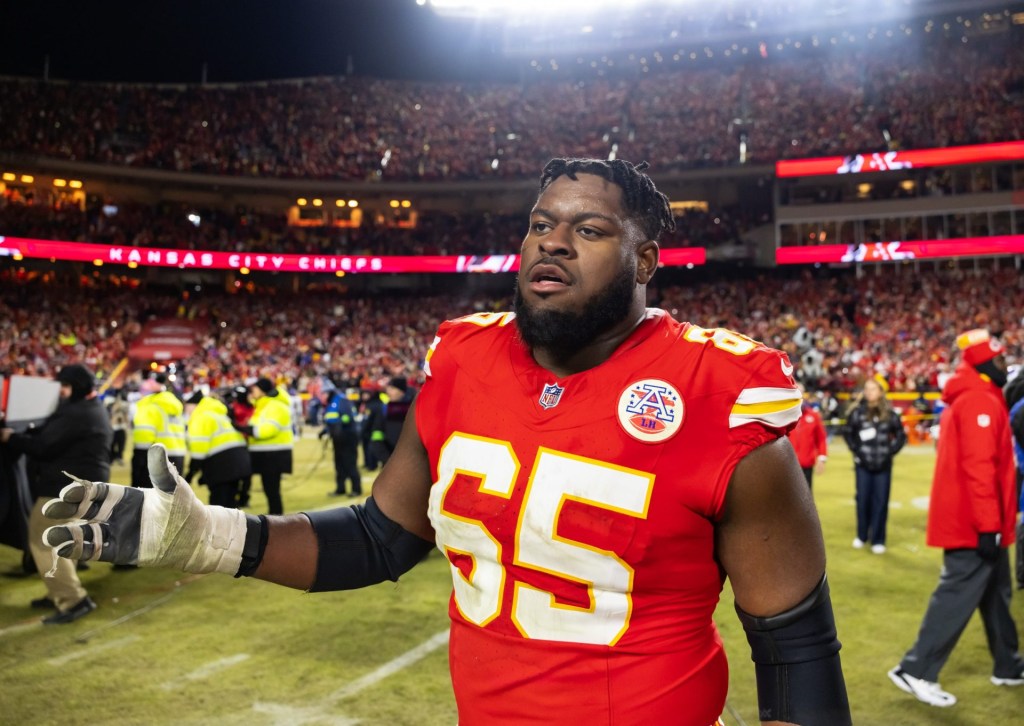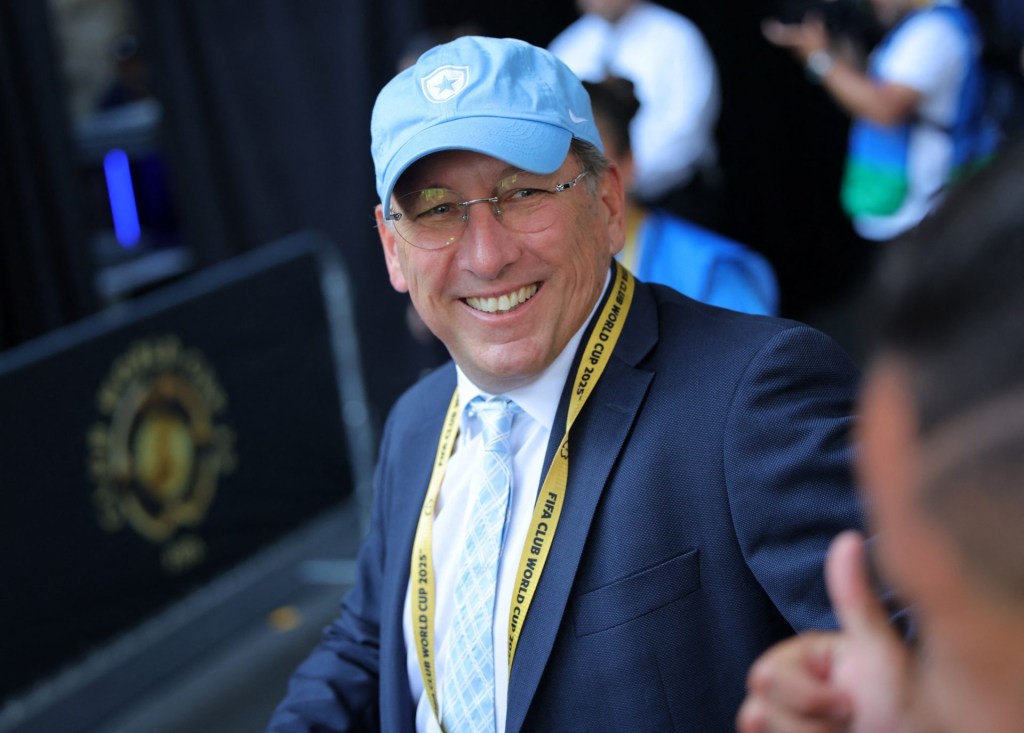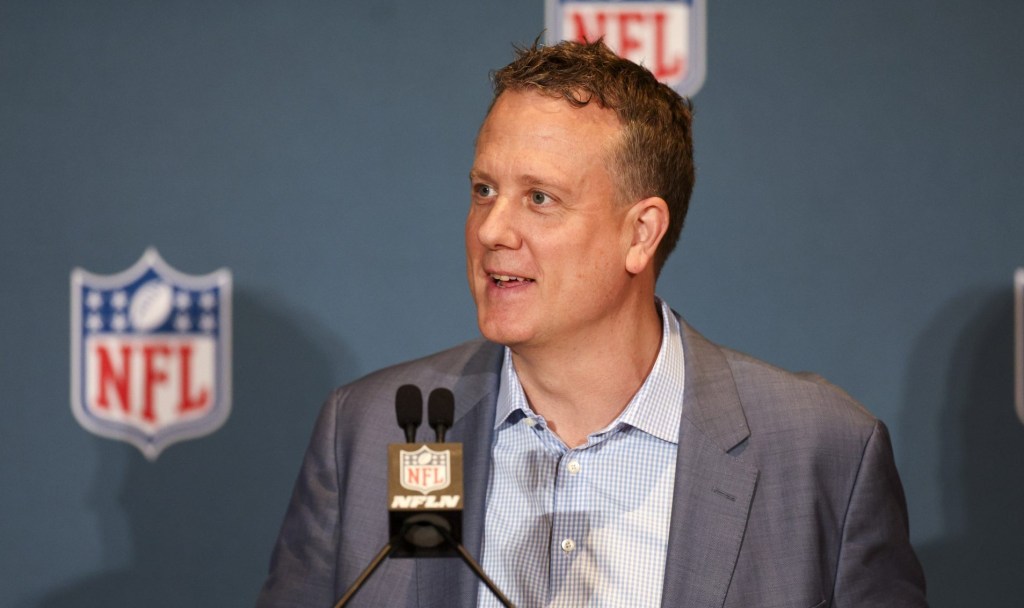23 cities are vying for future honors and the process might be as competitive as hosting a Super Bowl.

The NFL Draft and New York City were inseparable for half a century. They were attached at the hip. That was until 2015, when a scheduling issue at Radio City Music Hall opened the door for the draft to run to daylight and out of town. Since then, the league has held the event in Chicago and Philadelphia and is still in the afterglow of the acclaimed, recent experience in the City of Brotherly Love that went beyond what most imagined possible for the event.
In this short period, we went from an assumption that New York would always be the host to 23 cities vying for future honors. Why is nearly two thirds of the league interested? What does the draft mean to a host city? What does this competition to host future drafts look like?
HOW THE DRAFT MADE ITS WAY HERE
Since it’s inception in 1936, the NFL’s Annual Selection Meeting (the technical term that ESPN’s Chris Berman was fond of using) bounced around from hotel to hotel and city to city, including stops in Chicago, Los Angeles, New York, Philadelphia, Pittsburgh and Washington. Starting in 1965, and as the League entered the common draft era in 1967, New York became the unofficial, permanent home of the draft for more than 50 years.
https://frontofficesports.com/streaming-the-nfl-the-amazon-thursday-night-experiment-e0b7920c9661
Things really began to take off at the dawn of the cable industry in 1980 as ESPN looked for unique, original programming, pitched the idea to televise the draft to NFL Commissioner Pete Rozelle and found a match. From the famous 1983 quarterback draft at the Sheraton to long runs at the Marriott Marquis and the Theatre at Madison Square Garden; teams, draftniks and even helmet phones flocked to New York City each spring.
Finally, after a long engagement at Radio City Music Hall that began in 2006, the NFL found that the venue had a conflict for all of April and May and needed to find an alternate host in 2015. That quirk in scheduling appears to have changed the trajectory of the draft for the foreseeable future.
What looked like a need for a stopgap solution in 2015 suddenly turned into 12 cities wanting to host the draft. New York attempted to retain the event with Madison Square Garden looking to return as the draft site. However, Chicago and Los Angeles emerged as the two leading competitors with their mayors openly lobbying for the event. Chicago’s winning venue wound up as the Auditorium Theatre at Roosevelt University with additional accommodation for fans in Grant Park for a Selection Square at Draft Town. It was chosen over Los Angeles’ expected host site of the Microsoft Theatre (then known as the Nokia Theatre) at L.A. Live.
https://frontofficesports.com/streaming-the-nfl-the-amazon-thursday-night-experiment-e0b7920c9661
The event was so successful, the NFL returned to the same venues in Chicago for an encore performance in 2016, while also announcing the development of a new process to select future draft host sites.
As the 2016 draft dawned, ESPN’s Adam Schefter reported that Philadelphia and Los Angeles were the two leading contenders for the 2017 NFL Draft — with Philadelphia considered the favorite. About four months later, the speculation was confirmed. Having now wrapped up the 2017 event, Philadelphia’s choice of the first-ever outdoor venue, the famed Rocky Steps of the Philadelphia Museum of Art, was hailed by many who cover the sport as an incredible success. Pictures of the overflow crowd resonated on television as the city placed the entire event in one location as opposed to Chicago’s two.

ECONOMIC IMPACT OF THE DRAFT ON THE HOST
In the years since leaving the Big Apple, three-day draft attendance has risen from 200,000 to 225,000 up to 250,000 fans this year in Philadelphia.
From 2015’s first foray outside of New York, the Chicago Sports Commission requested an event and attendee analysis from the Sport Industry Research Center (SIRC) at Temple University that was paid for by Choose Chicago.
The survey was based on a sampling of attendees and found that the total economic impact of holding the draft in Chicago came in at more than $81 million. In addition, the event created over 840 new, temporary jobs in Chicagoland, generated $6.5 million in new tax revenue (state and local — despite the Chicago Park District waiving some security deposits and fees) and increased residential household incomes by a combined $32 million.
Visiting fans accounted for 30,995 hotel nights and staff, while sponsors and media accounted for 5,581 additional nights at their respective inns. Half of them drove in and 11 percent flew commercially to attend. Roughly three out of every 10 attendees were in the coveted marketing demographic of ages 25–34.
“Hardcore fanatic” was the description used for 47 percent of fans toward the NFL with 59 percent listed as such for their team. One extra note that had to make city officials ecstatic was the extent to which visiting fans were willing to be ambassadors for the city. SIRC found that 83 percent would be willing to recommend Chicago as a travel destination and 65 percent intended to return to the city on vacation in the next calendar year. Those numbers attract attention!
Philadelphia’s Convention and Visitor’s Bureau used this study to project a similar $80 million plus economic impact for the 2017 NFL Draft — although, this was based on only 200,000 fans instead of the actual 250,000 in attendance. The estimate expected 39,000 total hotel room nights — up from Chicago’s numbers. These hotel rooms also faced increased economic pressure from scarcity with the historic Penn Relays occupying the same three days on the calendar.
Officials were further encouraged by the increase in fans that signed up for the lottery for actual seats for the event. Chicago’s 2016 lottery total was 48,000 interested fans. Philadelphia’s 2017 total blew that out of the water with 156,000 fans applying.
Jeremy Jordan, the director of SIRC that conducted the Chicago study, theorized that Philadelphia’s proximity to other major NFL markets (e.g. New York, Baltimore, Washington) would aide its case as well. While official numbers were not available at the time of this article’s publishing, these factors, actual attendance and increased fervor by NFL owners and cities to host future drafts seem to suggest the road show will continue in coming years.
To step back and picture all the economic activity generated, Meryl Levitz, the President and CEO of Visit Philadelphia, told Philly.com that areas such spending on food and beverage, lodging, retail shopping, local transportation, other entertainment, miscellaneous expenses and additional expenditures by businesses, such as advances in supplies, all contribute to the economic benefit.
On the other side of the coin, financing the event was estimated at $25 million with the NFL footing the bill for 80 percent of the total, the City of Philadelphia forking over $500,000 as the smallest contributor, and private funding making up the remainder. The NFL further guaranteed the $500,000 municipal figure by pledging to pay for any overage in city costs.

BREAKDOWN OF HOST COMPETITION GOING FORWARD
With economic benefit and the eyes of football fans across the globe, the race to hold future NFL Drafts is starting to line up to be every bit the competition that Super Bowl bidding has been for decades. Noting that parallel, it is fair to ask what the criteria will become for hosting the event. Some have speculated that, like a Super Bowl, it could be a reward to sites for building a new development. With Super Bowls traditionally relegated to warmer climates, the draft may also become an alternate way to rewards host sites with inclement weather during the February sweeps ratings period. With nearly 10 months required for preparation in 2017, the expectation is that the NFL would award the next draft at the beginning of July instead of September last time.
Let’s take a look at what the next three years appear to offer for competition:
2018 — Entering coverage of the 2017 NFL Draft, ESPN’s Field Yates reported that Dallas held the same favorite label that Philadelphia did a year earlier in their efforts to host the 2018 NFL Draft at their massive new campus headquarters in Frisco, Texas that opened last year and has already hosted high school football games well in advance of its full completion. Part of the festivities may also be slated for AT&T Stadium more than a half hour away in Arlington, Texas. Philadelphia was named as the leading competitor then with Green Bay and Kansas City considered further off the pace.
In a pre-draft interview with Mike Mayock, NFL Network host Rich Eisen hinted that he suspected the draft would be headed for Texas by saying that “you might want to get your 10-gallon hat and your Texas garb ready for next year” as “breadcrumbs” for consideration.
Since the draft, speculation has risen that Philadelphia may not be a pushover in 2018. Sports Illustrated’s Peter King told Rich Eisen after the draft that he now believed “they (the NFL) have to give it a legitimate going over.” It has been reported that 14 cities are bidding for 2018.
The Cowboys held their team draft party at The Star’s Ford Center and saw an attendance of 7,761. There, Cowboys’ Owner Jerry Jones told the crowd, “I really do have a dream that we might be standing right here next year, and the entire NFL draft (will) be right here.” Jeremy Bergman reported on NFL.com that owners will meet in May to discuss whether to return the draft to Philadelphia or open the process up for the 2018 draft.
2019 — The picture for 2019 is murkier in nature. By then, the NFL is expected to have a formal bidding process in place. Denver, Green Bay and Jacksonville have all targeted 2019 as their draft of choice to host. The latter two have new developments opening that would be tied to hosting the event. Green Bay’s Titletown District development will be a key to their bid, and Jacksonville will feature Daily’s Place, a new amphitheatre currently under construction. Additionally, the new Los Angeles Stadium at Hollywood Park in Inglewood will open for business the year. These cities all figure to be heavily in the mix. Beyond these four, other cities reported has having submitted proposals or scheduled to do so for 2019 include Atlanta, Dallas, Pittsburgh and the joint Canton/Cleveland bid that will be officially submitted later this summer.
2020 — The Pro Football Hall of Fame’s Hall of Fame Village in Canton, Ohio will have been fully completed after expansion in scope pushed parts of the village past the original 2019 grand opening. That will make it ready in time for the 100th anniversary of the NFL in 2020. Pro Football Talk has reported that the significance of that date is the prime target for Canton in their attempts to host the NFL Draft. Having said that, Peter King shared that he believed that Canton was “in the running, but I don’t sense it’s in the driver’s seat.” If not Canton, from the 2019 competitors, the new L.A. stadium in Inglewood will be completely ready and have hosted a full season of games for the Rams and Chargers.
BREAKDOWN OF INTERESTED HOSTS GOING FORWARD
So, the idea worked in Chicago and Philadelphia. Now, it has been shared that anywhere from 14 to 23 cities have expressed interest in hosting future NFL Drafts based on published reports. Here’s a look at all the potential host cities that have been reported including some details, where available, on their bids:

Have your calendars and business plans flexible in upcoming years. The NFL Draft may be coming to a city close to you sooner than you think.
Front Office Sports is a leading multi-platform publication and industry resource that covers the intersection of business and sports.
Want to learn more, or have a story featured about you or your organization? Contact us today.

















